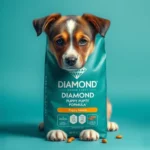
Introduction
Dog nutrition is crucial for maintaining overall health and wellbeing. Just like humans, dogs require a balanced diet that provides essential nutrients to thrive. While many dog owners may be aware of standard dog foods, the idea of introducing human foods can often lead to questions. With a plethora of fruits available, one lesser-known option is longan, prompting the question: can dogs eat longan?
Understanding Dog Nutrition
Essential Nutrients for Dogs
To ensure our furry friends lead healthy lives, it is vital to understand the essential nutrients they need:
- Proteins: Building blocks for tissues and muscles, proteins are crucial for growth and repair.
- Fats: Healthy fats provide energy and support cell structure. They also aid in the absorption of fat-soluble vitamins.
- Carbohydrates: While not essential, carbohydrates can provide energy and aid digestion.
- Vitamins: Essential for various bodily functions, vitamins support immune health and metabolic processes.
- Minerals: Vital for bone health and various enzymatic functions, minerals like calcium and phosphorus are important too.
Importance of a Balanced Diet
A balanced diet is key to preventing health issues in dogs. Nutritional deficiencies can lead to a variety of problems, including:
- Skin issues
- Dental disease
- Obesity
- Weak immune system
Understanding these dietary needs helps pet owners make informed choices about what to feed their dogs.
Overview of Longan
What is Longan?
Longan is a tropical fruit native to Southeast Asia, often likened to lychee due to its similar appearance and sweet taste. The fruit is small and round, with a thin, brown shell that encases translucent, juicy flesh.
Nutritional Profile of Longan
Longan is rich in several vitamins and minerals:
- Vitamin C
- Vitamin B2 (Riboflavin)
- Potassium
- Phosphorus
- Iron
Nutritional Benefits of Longan for Humans
For humans, longan is not just a sweet treat; it also boasts various health benefits, including:
- Antioxidant properties: Helps combat oxidative stress.
- Improved sleep quality: Traditionally used in Chinese medicine for its calming effects.
- Enhanced immunity: Due to its high vitamin C content.
These benefits make longan an appealing choice for human consumption. But what about dogs?
Can Dogs Eat Longan?
Safety of Longan for Dogs
When considering whether dogs can eat longan, it’s important to weigh the potential benefits against the risks. Longan is not toxic to dogs, and it can provide some nutritional value. It is low in calories and contains beneficial vitamins.
However, the fruit’s high sugar content may be a concern, especially for dogs with diabetes or obesity. Additionally, the longan seed is hard and could pose a choking hazard or cause intestinal blockage if ingested.
Allergic Reactions and Digestive Issues
Before introducing any new food, it’s essential to monitor for allergic reactions. While rare, some dogs may experience allergies to longan. Symptoms can include:
- Itching
- Swelling
- Digestive upset
Common digestive issues associated with feeding dogs fruits include:
- Diarrhea
- Vomiting
- Gas
If any of these symptoms occur after feeding longan, it’s best to discontinue its use immediately.
How to Safely Introduce Longan to Your Dog’s Diet
Preparing Longan for Dogs
To safely incorporate longan into your dog’s diet, follow these steps:
- Wash the fruit: Clean longan thoroughly to remove any pesticides or dirt.
- Remove the skin: The skin is not suitable for dog consumption.
- Take out the seed: Ensure that the hard seed is completely removed before offering the flesh to your dog.
- Cut into small pieces: This prevents choking and makes it easier for your dog to eat.
Portion Control and Frequency
When introducing longan, portion control is paramount. The recommended serving size depends on your dog’s size:
- Small dogs: 1-2 pieces
- Medium dogs: 2-4 pieces
- Large dogs: 4-6 pieces
Longan should be treated as an occasional treat rather than a staple in your dog’s diet. Aim for no more than once a week to avoid digestive upset.
Alternative Fruits for Dogs
Safe Fruits for Dogs
If you’re looking to diversify your dog’s fruit intake, there are plenty of safe options:
- Apples: Remove seeds and core.
- Blueberries: Packed with antioxidants.
- Bananas: A potassium-rich treat.
- Watermelon: Hydrating and refreshing, without seeds and rind.
Fruits to Avoid
Some fruits can be toxic to dogs and should always be avoided:
- Grapes: Can cause kidney failure.
- Cherries: Contain cyanide, harmful to dogs.
- Avocado: Contains persin, which can be toxic.
Being informed about safe and unsafe fruits can help ensure your dog’s diet remains healthy.
Conclusion
In summary, while dogs can eat longan, it’s essential to approach this fruit with caution. The potential benefits must be balanced against the risks, particularly regarding sugar content and the presence of seeds. Always consult with a veterinarian before introducing new foods into your dog’s diet.
Maintaining a balanced diet is key to your dog’s health, and being informed about what foods are safe can make all the difference. When it comes to introducing any new treats, diligent monitoring and moderation are crucial.
FAQs
Can all dogs eat longan?
Not all dogs are the same; factors such as size, breed, and existing health conditions can influence whether longan is suitable for your pet. Always start with a small amount to gauge tolerance.
What should I do if my dog eats longan?
If your dog accidentally consumes longan, observe them for any signs of distress or allergic reactions. If symptoms occur, contact your veterinarian immediately for guidance.
Are there any dog-friendly longan recipes?
You can incorporate longan into homemade dog treats. Simply blend longan flesh with oats and a bit of peanut butter, then bake into small cookies. Always ensure the seeds and skin are removed before feeding.
References
- [Authoritative sources on dog nutrition and human food safety for dogs.]









